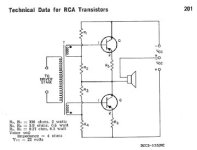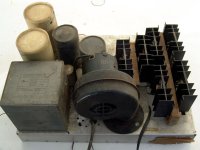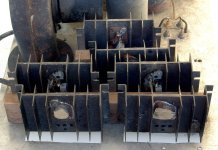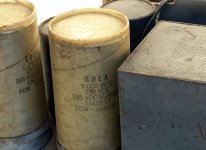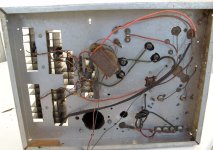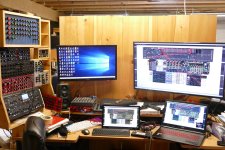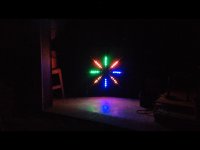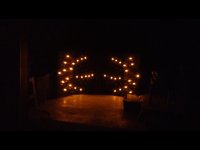That’s how I got started - salvaging parts making solid state amps, trying to make ones big enough to do raves with. Not easy when you’re a teenager with NO money - but it does teach resourcefulness, and how to ignore people who just tell you to “Go buy XYZ and forget all this DIY nonsense”.I will be watching this with great interest, making something out of cheap and used parts is a favorite pastime of mine. Hope all goes well with the surgery, I’m unlikely to get my amp done any sooner than you. Being a professional musician tends to keep one busy
What I am working on, and will be for a while is a DC servo. This will be applicable to any big amp with multiple parallel sweep tubes. Essentially, it’s an op amp that keeps individual opposite pairs in DC balance. Sense the DC across 1 ohm cathode resistors, and auto bias the other up and down to keep the difference zero. It SHOULD null out imbalance caused by 2nd harmonic generation in operation, allowing for maximum undistorted output. The issues that need to be worked out regard loop stability. Simulate all you want, but real problems require tweaking in practice.
Im pretty sure I can get the amp up and running without it. But I want to ensure optimum performance over time, without having to go and periodically tweak bias. I’m planning for the 350 watters to run top cabs, and the kw units for subs. It’s a bucket-list music-festival-capable, all tube PA….. Why? Because I can, and for no other reason.
Im pretty sure I can get the amp up and running without it. But I want to ensure optimum performance over time, without having to go and periodically tweak bias. I’m planning for the 350 watters to run top cabs, and the kw units for subs. It’s a bucket-list music-festival-capable, all tube PA….. Why? Because I can, and for no other reason.
There is a sticky thread at the top of this instruments and amps category. It was brought about back in 2011 by someone trying to sell his Hundred Buck amp kit here on the forum by stating that nobody could build anything better for $100, to which I replied,"Wanna bet??" That started a several year guitar amp design contest that resulted in several amps being designed using unorthodox "guitar amp" parts. It is a worthwhile, but long and sometimes ugly dissertation about how to build something from repurposed parts for minimum cost. I made two different amps during that contest, a 4 tube 4 watt amp that I still use often, and a 5 tube 18 watt amp that hasn't seen power in several years. The 18 watt amp used an Antek AN-0509 50 VA toroid for the OPT. It sounded great for guitar use but I never played a bass through it.With the high turns per volt, it may roll off sooner than one of their little ones running with only 240 volts RMS across their “primary”. But when their 50 VA units are used that way they sound fantastic. This is a nice little zero feedback PP class A I made.........
......... Just waiting on deck like George’s drool-over Plitron OPTs.
https://www.diyaudio.com/community/threads/the-hundred-buck-amp-challenge.190738/
Those Plitron OPT's first appeared in a thread about a big amp being built with 8 X 807 tubes. I grabbed a pair back in 2007 (post #7). They have been used in dozens of test amps in over 15 years, but have never been mounted in anything. Maybe 5 years ago another forum member sold me a second set of similar Plitrons that are potted in large metal and epoxy cans. They seem to be electrically identical to the naked toroid versions but weigh nearly twice as much. I am now a few weeks short of 71 years old. I need to build the 1 KW monster tube amp while I can still lift it. It will use the naked toroids and 13 SMPSs for the main B+ and heater supplies for lighter weight. I'm leaning toward a small microcontroller for auto bias and diagnostics.
https://www.diyaudio.com/community/threads/eight-807s-in-push-pull.100852/
Same deal here. Why build a kilowatt level tube amp? Because I can. My previous two monsters were solid state back when huge solid state amps were rare.
Back in high school I built a solid state amp with 6 X mystery transistors from a local (Miami) surplus store. It made between 250 and 300 watts into 4 ohms on about 100 volts of B+. See pictures, yes it's ugly. The only tools I had were a hand drill and a nibbling tool (remember those?) I found it in my shed after a hurricane trashed the shed. I plugged it in and watched one of the caps vent stink, took a few pictures, stripped off the heat sinks, then threw it in the trash.
Sometime in 1972 I found a monster heat sink in a military surplus yard that had 24 X 2N3773's on it. I used the same driver transformer totem pole circuit with two parallel banks of 12 transistors to make a monster amp that used a non isolated power supply that can not be discussed here, which made about 150 volts at plenty of current. The actual power output that this amp made was unknown as we had nothing to use for a test load that would handle what it put out.
Attachments
I would love to see a few ammeters on that supply line. That sounds hilarious and something I’d absolutely endorse.What I am working on, and will be for a while is a DC servo. This will be applicable to any big amp with multiple parallel sweep tubes. Essentially, it’s an op amp that keeps individual opposite pairs in DC balance. Sense the DC across 1 ohm cathode resistors, and auto bias the other up and down to keep the difference zero. It SHOULD null out imbalance caused by 2nd harmonic generation in operation, allowing for maximum undistorted output. The issues that need to be worked out regard loop stability. Simulate all you want, but real problems require tweaking in practice.
Im pretty sure I can get the amp up and running without it. But I want to ensure optimum performance over time, without having to go and periodically tweak bias. I’m planning for the 350 watters to run top cabs, and the kw units for subs. It’s a bucket-list music-festival-capable, all tube PA….. Why? Because I can, and for no other reason.
I ain’t writin‘ no effing code. And spending 3 years debugging it. Bias controller goes all analog. Each pair will have a diagnostic red and green, to be able to balance pairs when setting bias. When the pot is where it SHOULD be the the error voltage is minimized giving maximum correction headroom. And if one goes out of whack you can see it instantly.
I want Phase Linear Series 2 meters on these. White Oak still sells the meter boards, I think. And ive made pretty convincing copies before by stringing together LM3914’s. What was COOL was going into a bank of triacs and driving red PAR38 floodlights with it….
When demo’ing this, I’ll have to resurrect my old disco light show. Maybe make a few additions.
I want Phase Linear Series 2 meters on these. White Oak still sells the meter boards, I think. And ive made pretty convincing copies before by stringing together LM3914’s. What was COOL was going into a bank of triacs and driving red PAR38 floodlights with it….
When demo’ing this, I’ll have to resurrect my old disco light show. Maybe make a few additions.
Last edited:
I started work at Motorola with a high school education in 1973 as an assembly line tech. I made it to a mid level product development engineer position without any engineering degree, but it became obvious that I would need formal education to get much further along. This led me to a bachelor's degree in in computer engineering at Motorola's expense. The CE degree is much like an EE degree except that ugly classes like thermodynamics and fields and waves are replaced by programming classes, mostly in the "C" language. This led me to fully realize that I never wanted to be a programmer or software engineer for a career, but I could write decent enough code to get it to work. I got a masters in electrical engineering several years later when I joined the research group. Many of my elective classes were software related.
I have successfully created a few music synthesizers that run in some high powered Arduino compatible boards called Teensys. I don't think that making a controller for an audio amp would be too hard, but I WILL make a simple sacrificial amp running a bunch of parallel connected cheap tubes to develop it on before blowing up expensive parts. There will be real time cathode and screen current monitoring of all output tubes with shutdown capability if anything gets out of hand.
Disco light show? I never got into disco music at all. Motorola seemed rather divided throughout the 70's. You were either a "Disco person" or a "rocker" with a few country music fans out in left field with the cows. My neighbor and landlord when I first started, blasted the thumpa thumpa stuff a lot. He was a boss at Motorola and wanted something unique so I made him the disco ceiling. Most of the "color organs" sold in the 70's just applied three different frequencies of music to the gates of a triac for each of the three colored lights. This led to a rather blinky on - off light box that I found annoying, so I designed the controller to be proportional to the level of the audio in each of five frequency bands. He replaced all of the acoustical tiles in his music room with the frosted plastic panels usually found over fluorescent light fixtures, then put lots of Christmas lights behind them. It was a most unusual Disco Room.
The picture shows my rack of synthesizers. Blue, at the top has 48 pots and 5 encoders all multiplexed into the inputs on a Teensy 3.6 board which runs a 32 bit CPU at a couple hundred MHz. It does a convincing emulation of the usual analog synth controls. There is a small wooden sub box stuffed into the rack on the right side of the third row from the top. It runs a Teensy 4.1. My mission was to see how many simultaneous synthesizers could run in it simultaneously without crashing or making rude sounds. Currently there is a typical analog synth with 6 note polyphony (six instances of the same program running) and a Karplus Strong synth also with 6 note polyphony that does a reasonably convincing acoustic guitar sound and third mono lead synth with a fat bass sound. The red faced panel sitting sideways unconnected is also a Teensy based synth that I built from a kit, them rewrote much of the code.
I have successfully created a few music synthesizers that run in some high powered Arduino compatible boards called Teensys. I don't think that making a controller for an audio amp would be too hard, but I WILL make a simple sacrificial amp running a bunch of parallel connected cheap tubes to develop it on before blowing up expensive parts. There will be real time cathode and screen current monitoring of all output tubes with shutdown capability if anything gets out of hand.
Disco light show? I never got into disco music at all. Motorola seemed rather divided throughout the 70's. You were either a "Disco person" or a "rocker" with a few country music fans out in left field with the cows. My neighbor and landlord when I first started, blasted the thumpa thumpa stuff a lot. He was a boss at Motorola and wanted something unique so I made him the disco ceiling. Most of the "color organs" sold in the 70's just applied three different frequencies of music to the gates of a triac for each of the three colored lights. This led to a rather blinky on - off light box that I found annoying, so I designed the controller to be proportional to the level of the audio in each of five frequency bands. He replaced all of the acoustical tiles in his music room with the frosted plastic panels usually found over fluorescent light fixtures, then put lots of Christmas lights behind them. It was a most unusual Disco Room.
The picture shows my rack of synthesizers. Blue, at the top has 48 pots and 5 encoders all multiplexed into the inputs on a Teensy 3.6 board which runs a 32 bit CPU at a couple hundred MHz. It does a convincing emulation of the usual analog synth controls. There is a small wooden sub box stuffed into the rack on the right side of the third row from the top. It runs a Teensy 4.1. My mission was to see how many simultaneous synthesizers could run in it simultaneously without crashing or making rude sounds. Currently there is a typical analog synth with 6 note polyphony (six instances of the same program running) and a Karplus Strong synth also with 6 note polyphony that does a reasonably convincing acoustic guitar sound and third mono lead synth with a fat bass sound. The red faced panel sitting sideways unconnected is also a Teensy based synth that I built from a kit, them rewrote much of the code.
Attachments
Here are some of the survivors. Retrofitted with LED C9’s. Controller was rebuilt in 2002 And still working.
Played plenty of classic rock with these running. Not just for disco.
Played plenty of classic rock with these running. Not just for disco.
Attachments
- Home
- Live Sound
- Instruments and Amps
- A quagmire of bass proportions? 300 watt sweep tube amp questions
